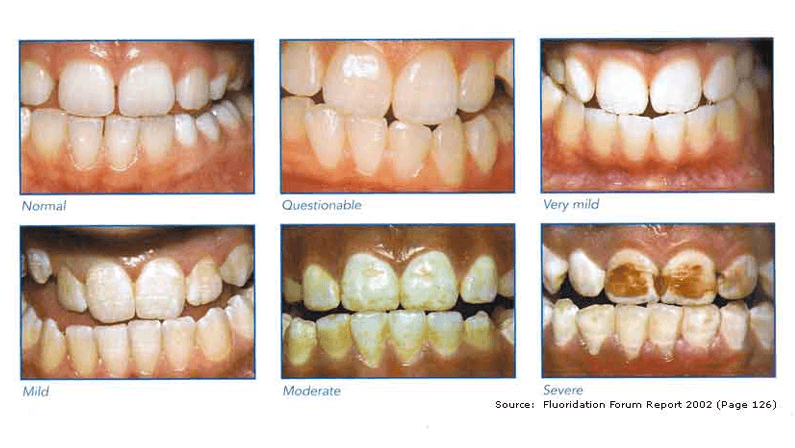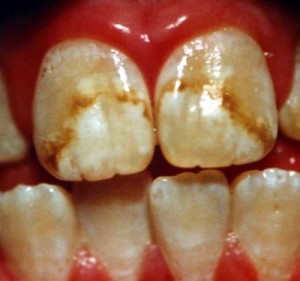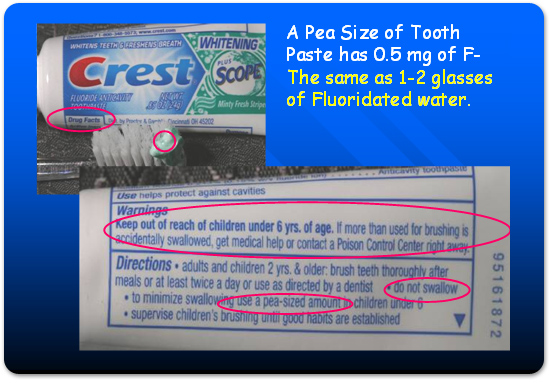Fluoride Levels in Drinking Water Lowered Due to Health Risks

Whoa – on 1/7/2011 Government officials announced that they will lower the levels of Fluoride added to public drinking water – this is big news in the water treatment and health world! For many years those who were skeptical of fluoridated water were made to feel like some kind of extreme granola eater, or anti-government type.
Artificially fluoridated water is a health issue, and Premier Water has always tried to present both sides of this debate. There are numerous studies that show benefits AND risks to consuming Fluoride. Even physicians and dentists are divided over the issue.
How Much Fluoride is in Your Water?
If you collect rain water, or draw water from a spring or well, there is probably no naturally occurring Fluoride mineral in your water at all. The Minnesota Department of Health requires all municipalities to add Sodium Fluoride, a man-made product, to their water supplies.
For over 60 years, the recommended level of Fluoride was 1.2ppm (parts per million). Now, researchers believe this level may pose risks to consumer’s health, and have lowered the recommend level to 0.7ppm, or almost half the previous level.
Why is Fluoride Added to Drinking Water?
Grand Rapids, Michigan became the world’s first city to fluoridate its drinking water in 1945. By 1951, the Surgeon General endorsed water fluoridation after a study in Grand Rapids linked a decline in children’s tooth decay to this new “miracle” water additive.
In 1955, Procter & Gamble Co. began marketing Crest, the first fluoride toothpaste. The rest is history.
How am I Exposed to Fluoride?
You can ingest Fluoride through a number of sources:
- Municipal drinking water
- Toothpaste
- Mouth wash
- Bottled water and soda made with municipal(city) water
- Any juice, soup, bread, or other food made with municipal water containing Fluoride (see USDA database of Fluoride levels in food)
What are the Problems with Fluoride in Drinking Water?
“Like anything else, you can have too much of a good thing,” said Dr. Howard Pollick, a professor at the University of California, San Francisco’s dental school and spokesman for the American Dental Association.
A recent government study found about 2 out of 5 adolescents have tooth streaking or spottiness because of too much Fluoride. In extreme cases, teeth can actually become pitted.
“The report of discoloration has been going up over the years,” said Dr. Robert Barsley, a professor at the LSU Health Sciences Center School of Dentistry. “It is not the water that’s causing this by any means. It’s the extra Fluoride products — toothpaste, mouthwash — that people are using. And people want nice white teeth so they brush three times a day.”
Opponents of Fluoride site additional scientific studies linking fluoride to numerous health ills including arthritis, bone cancer, emphysema and nervous system disorders like Alzheimer’s disease and attention deficit disorder (ADD). One study describes Fluoride as “so potent a chemical that it’s also a grave environmental hazard and a potential workplace poison.”
Toothpaste manufacturers are quick to point out safety concerns with their products. Fluoride is considered poisonous, and potentially fatal if swallowed. Toothpaste labels clearly insist on parental supervision for children under 6 when they are brushing their teeth; to only give them a pea-size amount; and to make sure they spit it out. Toddlers under 2 shouldn’t use Fluoridated toothpaste at all.
Is There a Fluoride Removal Water Filter?
Yes. Fluoride is considered an inorganic substance, and is effectively removed by Reverse Osmosis. Although Fluoride will not absorb through the skin, small levels could be inhaled during a steam shower, etc. Whole house options like the Pureoflow have become popular as they produce Fluoride-free drinking water from every tap, but also provide added protection against inhalation.
Faucet filters, pitcher-style filter, and refrigerator filters use carbon as the primary filter media.
Carbon excels at removing organic contaminants. Unfortunately carbon DOES NOT have the ability to remove inorganic contaminants such as Fluoride.
Summary
Fluoride, or any man-made water additive will most likely remain a hotly discussed topic. There is a mountain of evidence that can support arguments for and against Fluoride, but for now, it appears the levels added to tap water will be reduced.



While Americans are suffering from obesity it would be wise to drastically limit intake of man made fluoride due to the negative effects it has on the thyroid gland. My Dr informed me that during his Med school yrs fluoride was routinely given to people suffering from overactive thyroid in order to slow down their super charged metabolism. Thus those who are over weight or have sluggish or impaired thyroid function could be unknowingly thwarting weight loss by drinking and using fluoridated water and other foods and beverages. Even breathing fluoride fumes while bathing/ showering can add to the fluoride overload and hinder thyroid function,